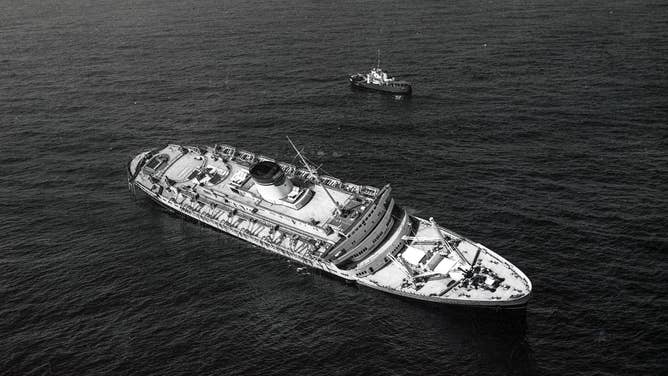Divers recover significant navigation instrument from wreckage of transatlantic ocean liner
The SS Andrea Doria was a luxurious Italian ocean liner that sank after a colliding with the MS Stockholm in 1956. Nearby ships helped rescue more than 1,600 passengers and crews before the vessel sank.
Wreckage of US Navy submarine from World War II found off Japan’s coast
The Naval History and Heritage Command confirmed the identity of a wreck site off the coast of Hokkaido, Japan, as the USS Albacore (SS-218), which sunk in 1944.
NANTUCKET, Mass. – A deep-sea expedition has recovered a significant navigational instrument from the wreck of the Italian luxury liner Andrea Doria, which rests around 230 feet beneath the surface in the Atlantic Ocean.
Photos posted to the recovery team’s social media accounts show divers aboard the D/V Tenacious posing with the items that have spent nearly 70 years underwater, buried within the deteriorating debris.
According to the U.S. Coast Guard, the Italian passenger ship SS Andrea Doria collided with the Swedish vessel MV Stockholm off the coast of Massachusetts during dense fog on July 25, 1956, and sank several hours later.
In the decades since, the wreckage has become a magnet for divers from around the world and is widely known as the "Mount Everest of Wreck Diving" due to its instability and dangerous conditions.
Numerous historical artifacts have been recovered from the site, with the latest item being a gyro compass repeater located on the ship’s bridge, which is considered to have been a critical on-board tool and may provide details about the vessel’s heading and collision.
Divers with Atlantic Wreck Salvage spent multiple days carefully untangling the approximately 5-foot-tall bronze compass, which was wedged in a tight space and surrounded by cables, pipes and debris, before safely bringing it to the surface.
NEARLY 300 QUEEN CONCHS FOUND AFTER ILLEGAL HARVEST IN FLORIDA KEYS
"Joe Mazraani located the compass repeater on his first dive of the team’s July 11–14, 2025, Andrea Doria expedition. He and diver Chris Ogden spent four successive dives over the course of three days excavating the artifact, which was inside a tight, enclosed space, surrounded by debris, and pinned by obstructions, fishing nets, pipes, and cables at a depth of 230 feet/70 m. Getting this artifact to the surface would have been impossible without the teamwork and tenacity of Maz and Chris," staff with the New Jersey-based dive vessel stated.
In addition to the compass, the recovery team reported finding a porthole, a light and several hand-painted Italian ceramics, which appeared to be in remarkably good condition given their time underwater.
Once fully restored, some of the items are expected to be put on display for public viewing, offering a rare look at life aboard one of the most storied ocean liners.
The wreckage of the Andrea Doria lies more than 60 miles off the U.S. East Coast in international waters - an area notorious for strong currents and low visibility, which make dives extremely hazardous.
Several divers are known to have died while exploring the Andrea Doria, though the most recent expedition reported no injuries to crew members.

"Andrea Doria" photo - July, 1956
( U.S. COAST GUARD / FOX Weather)
NOAA MISSION FINDS UNEXPECTED DISCOVERY AT SITE OF SUNKEN USS YORKTOWN
The other vessel involved in the collision, the MS Stockholm, remained afloat and was able to return to a nearby port.
The Swedish passenger ship underwent major repairs and continued in service for many years until recently, when it was sold for scrap and is now slated to be dismantled.
Editor's Note: This story was updated to correct the company's name of Atlantic Wreck Salvage.
